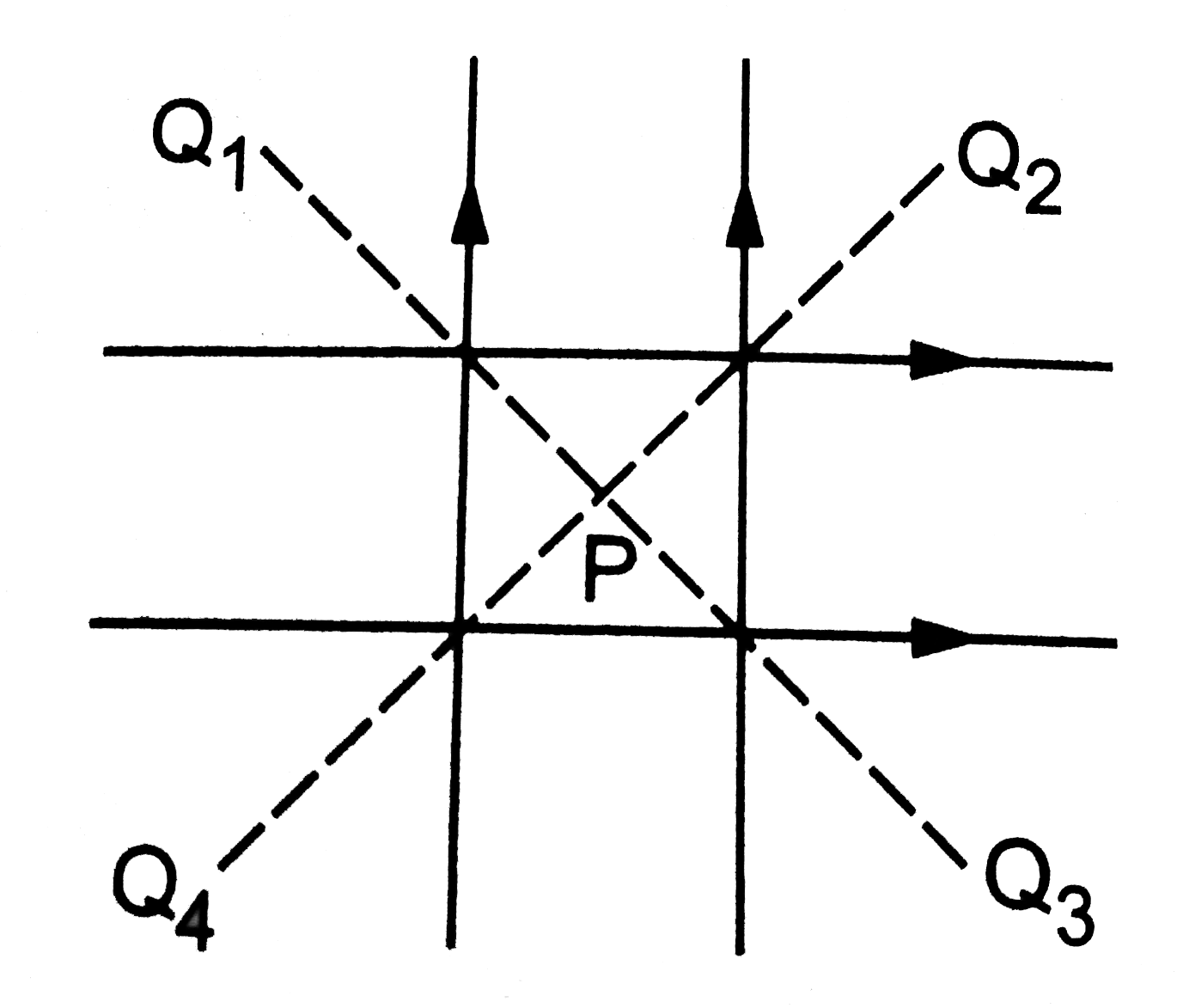If A(0, 0) and C(6, -8) are end points of diagonal of a square then sum of square of abscissa of other vertex is
The correct Answer is:50
To solve the problem, we need to find the sum of the squares of the abscissa (x-coordinates) of the other two vertices of a square, given the endpoints of the diagonal A(0, 0) and C(6, -8).
1. Identify the Points:
- Let the vertices of the square be A(0, 0), B(α, β), C(6, -8), and D(δ, ε). Here, A and C are the given diagonal endpoints.
2. Find the Midpoint of AC:
- The midpoint M of diagonal AC can be calculated using the midpoint formula:
M=(x1+x22,y1+y22)
- For points A(0, 0) and C(6, -8):
M=(0+62,0−82)=(3,−4)
3. Determine the Length of the Diagonal:
- The length of diagonal AC can be calculated using the distance formula:
d=√(x2−x1)2+(y2−y1)2
- For points A(0, 0) and C(6, -8):
d=√(6−0)2+(−8−0)2=√36+64=√100=10
4. Calculate the Side Length of the Square:
- The side length s of the square is related to the diagonal d by the formula:
d=s√2⟹s=d√2=10√2=5√2
5. Find the Coordinates of Vertices B and D:
- The vertices B and D can be found by rotating point C around the midpoint M by 90 degrees. The rotation transformation can be applied as follows:
- Let B be (xB,yB) and D be (xD,yD).
- The coordinates can be derived from the midpoint and the side length:
B=M+(s2,s2)andD=M−(s2,s2)
6. Calculate the Coordinates:
- Using s=5√2:
B=(3+5√22,−4+5√22)andD=(3−5√22,−4−5√22)
7. Sum of Squares of Abscissas:
- The abscissas of vertices B and D are xB=3+5√22 and xD=3−5√22.
- Calculate the sum of squares:
S=x2B+x2D=(3+5√22)2+(3−5√22)2
- Expanding both squares:
S=⎛⎝9+2⋅3⋅5√22+(5√22)2⎞⎠+⎛⎝9−2⋅3⋅5√22+(5√22)2⎞⎠
- Simplifying:
S=9+9+2⋅(25⋅24)=18+25=43
8. Final Calculation:
- The sum of the squares of the abscissas of the other vertices is:
S=50
Conclusion:
The sum of the squares of the abscissas of the other vertices is 50.
- Let the vertices of the square be A(0, 0), B(α, β), C(6, -8), and D(δ, ε). Here, A and C are the given diagonal endpoints.
- The midpoint M of diagonal AC can be calculated using the midpoint formula:
M=(x1+x22,y1+y22)
- For points A(0, 0) and C(6, -8):
M=(0+62,0−82)=(3,−4)
- The length of diagonal AC can be calculated using the distance formula:
d=√(x2−x1)2+(y2−y1)2
- For points A(0, 0) and C(6, -8):
d=√(6−0)2+(−8−0)2=√36+64=√100=10
- The side length s of the square is related to the diagonal d by the formula:
d=s√2⟹s=d√2=10√2=5√2
- The vertices B and D can be found by rotating point C around the midpoint M by 90 degrees. The rotation transformation can be applied as follows:
- Let B be (xB,yB) and D be (xD,yD).
- The coordinates can be derived from the midpoint and the side length:
B=M+(s2,s2)andD=M−(s2,s2)
- Using s=5√2:
B=(3+5√22,−4+5√22)andD=(3−5√22,−4−5√22)
- The abscissas of vertices B and D are xB=3+5√22 and xD=3−5√22.
- Calculate the sum of squares:
S=x2B+x2D=(3+5√22)2+(3−5√22)2
- Expanding both squares:
S=⎛⎝9+2⋅3⋅5√22+(5√22)2⎞⎠+⎛⎝9−2⋅3⋅5√22+(5√22)2⎞⎠
- Simplifying:
S=9+9+2⋅(25⋅24)=18+25=43
- The sum of the squares of the abscissas of the other vertices is:
S=50
The sum of the squares of the abscissas of the other vertices is 50.
Topper's Solved these Questions
- BOOK - VMC MODULES ENGLISHCHAPTER - MOCK TEST 3EXERCISE - PART III : MATHEMATICS (SECTION-2)10videos
MOCK TEST 3
- BOOK - VMC MODULES ENGLISHCHAPTER - MOCK TEST 2EXERCISE - PART III : MATHEMATICS (SECTION - 2)10videos
MOCK TEST 2
- BOOK - VMC MODULES ENGLISHCHAPTER - MOCK TEST 4EXERCISE - MATHEMATICS (SECTION 2)5videos
MOCK TEST 4
Similar Questions
If (a, b) be an end of a diagonal of a square and the other diagonal has the equation x−y=a, then another vertex of the square can be
View SolutionA triangle has two of its vertices at (0,1) and (2,2) in the cartesian plane. Its third vertex lies on the x-axis. If the area of the triangle is 2 square units then the sum of the possible abscissae of the third vertex, is-
View Solution
Knowledge Check
- Question 1 - Select One
If the end points of the diagonal of a square are (-2,3,1) and (-3,5,2) , then the length of the side of the square is
A√2 unitsB√3 unitsC√6 unitsD2√3 units
The vertices of a diagonal of a square are (−2,4) and (−2,−2) Find the other vertices
View SolutionShow that the diagonals of a square are equal and bisect each other at right angles.
View SolutionShow that the diagonals of a square are equal and bisect each other at right angles.
View SolutionShow that the diagonals of a square are equal and bisect each other at right angles.
View SolutionWhat is the area of a square with diagonal of 6?
View SolutionThe Curve possessing the property that the intercept made by the tangent at any point of the curve on they-axis is equal to square of the abscissa of the point of tangency, is given by
View SolutionFour long, straight wires, each carrying a current of 5.0 A, are placed in a plane as shown in figure . The points of intersection form a square of side 5.0 cm. (a) Find the magnetic field at the centre P of the square. (b) Q1,Q2,Q3andQ4 are points situated on the diagonals of the square and at a distance from P that is equal to the length of the diagonal of the square. Find the magnetic fields at these points.
 View Solution
View Solution

